Decisive Edge Newsletter | Naval | April 2023
Newsletter Sponsors:
Uncrewed attackers – a new disruptive element, from the Black Sea to the Taiwan Strait?
Since the beginning of the war in Ukraine, analysts have been warning that China is closely watching Russia’s every move. Both successes and failures are valuable lessons for Beijing’s future plans concerning Taiwan.
But what about the island Republic of China? Can Ukraine’s use of unmanned systems also teach Taipei some valuable lessons?
On 29 October 2022, Ukraine attacked Russia’s Sevastopol naval base with eight UAVs and seven USVs. This reportedly damaged an Admiral Grigorovich-class frigate and a minesweeper.
Just one month later, on 17 November, Ukraine carried out another attack using a USV against critical oil infrastructure in the port of Novorossiysk.
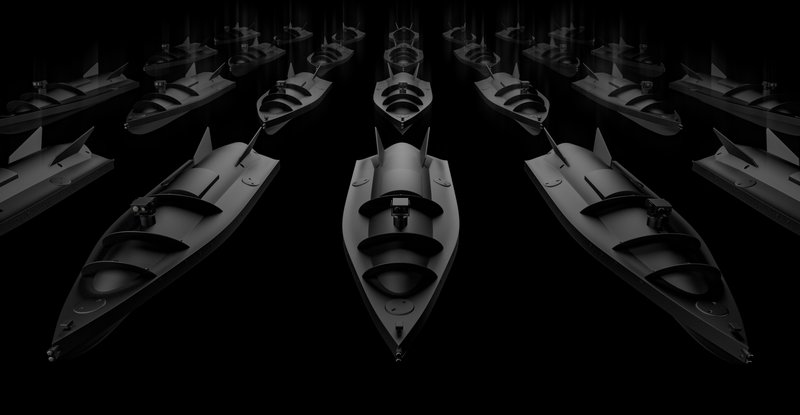
Above: Ukraine’s approach to developing and fielding weaponised USVs may not be directly applicable to the defence of Taiwan but lessons can still be learned. (Image: United 24)
Though neither attack resulted in major capability losses, both delivered a significant surprise effect that forced Russia to increase security at its ports and naval bases and, effectively, backed its navy into a corner.
A third combined UAV/USV attack carried out on Sevastopol on 22 March, this time apparently thwarted, shows that the Russian Navy may have learned its lesson.
It also underlined, just as importantly, that Ukraine is capable of surprising, disrupting and inflicting damage on its much bigger neighbour using simple means; the USVs were essentially weaponised jet-skis.

Above: A FULL RANGE OF NAVAL VESSELS: Excellence and reliability every day, in every way, everywhere.
Thousands of kilometres away, on both sides of the Taiwan Strait, strategy and tactics of the war are being analysed in depth. Ukraine’s use of UAVs and USVs, in particular, has been at the centre of multiple analysts’ and journalists’ writings, asking if Taiwan could replicate similar feats against China.
A close look at the specific context of this flashpoint shows that copy-and-paste tactics may not be so applicable, however.
Russia may have significantly underestimated Ukraine’s ability to carry out such raids, but this is hardly the case in Taiwanese waters.
Both the People’s Liberation Army Navy (PLAN) and the Republic of China Navy (ROCN) have been preparing for a potential confrontation for decades, and the development of uncrewed systems on both sides is a perfect example.
While it is difficult to find information on PLAN USVs, OSINT sources shows that Beijing is putting significant emphasis on the development of such platforms. Regional media analysing Chinese activity have stated that the PLAN has opened a new facility in Dalian dedicated to testing USVs, and this is currently working on a 20m+ craft that could allegedly fire torpedoes.
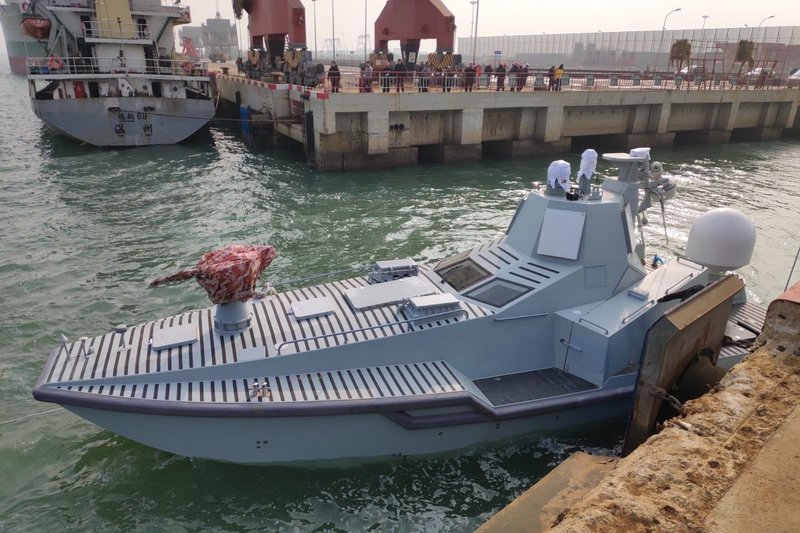
Above: China has a number of armed USV designs in development and has opened a dedicated testing facility for such craft. (Photo: PLAN)
Additionally, at the latest NAVDEX exhibition in February, Chinese company Poly Technologies showcased its A45. Although this USV was officially presented as an anti-piracy, anti-drug and anti-arms trafficking platform, it features swarming capabilities, which are seldom associated – or needed – for such missions.
Also at NAVDEX, the CSSC (China Shipbuilding Trading Company) unveiled its JARI-USV-A, a 58m-long system equipped with a range of weapon systems – including ship-to-ship and ship-to-air missiles, machine guns and rockets.
On the Taiwanese side, there is little to no information concerning development of USVs for the ROCN. This is not to say that skills are lacking.
For instance, Singapore’s MARSEC USV will reportedly be produced by Taiwan’s Lung Teh Shipbuilding, with ST Engineering acting as system integrator and prime.
Nor does the apparent absence of indigenous USV developments preclude Taiwan from leveraging off-the-shelf civil technologies, like Ukraine and its jet-skis.

Above: Mission Specialist Defender underwater robots are rugged, reliable, and adaptable to a wide range of missions. The Defender is the base platform for the U.S. Navy's MK20 Defender ROV program. Visit VideoRay.com
By contrast, UAVs with naval applications appear to be at a more advanced development stage in both countries, with information more readily available. In China, both a 2018 report published by the Beijing Joint Armaments Technology Academy and the country’s 14th Five-Year Plan (2021-2025) highlight the importance of UAS development.
In this context, several tests were carried out between 2017 and 2020 with different undisclosed types – including one resembling the CH-901 loitering munition according to local sources, mostly trying to fly them in swarms.
Over in Taiwan, a state-owned weapons developer invited local media for a factory tour in March to showcase five new types of indigenous military drones. The systems discussed during the visit were essentially surveillance UAVs, such as the Albatross II for maritime missions and the Cardinal III for coastal overwatch.
Other – possibly attack – UAVs are in production, the company said, although information is classified due to the sensitive geopolitical context. This is in line with plans announced by the Taiwanese government back in 2022 to significantly increase UAV production.
USV and UAV developments and trends in both the PLAN and the ROCN clearly demonstrate that both China and Taiwan have been preparing for potential conventional and hybrid naval confrontations.
As such, creating the element of surprise, for either country, would likely require more advanced tactics than the attacks carried out by Ukraine against Russia.
In their recently published book, Vaincre en mer au XXIe siècle - La tactique au cinquième âge du combat naval, Thibault Lavernhe and François-Olivier Corman note that to create a surprise effect in the naval domain, forces can leverage three elements: environment, speed and deception.
As far as the Taiwan Strait is concerned, the environment is well known and, consequently, well secured on both sides. Considering that the strait is approximately 170km across, a fleet or swarm of USVs and/or UAVs approaching any targets by day or night would be detected immediately.
Additional constraints related to the fact that USVs, to date, need to be remotely piloted mean that these systems are limited in their effective range.
What might work in favour of either party is the fact that the area is characterised by heavy maritime traffic, including freighters and tankers, fishing vessels and a wide range of ‘unidentified’ craft, according to the MarineTraffic website. As Lavernhe and Corman write: ‘In areas featuring particularly dense maritime traffic, naval combat actors can benefit from the “cover” such activity offers to surprise their adversary.’
Combining speed with tactics leveraging ‘cover’ could potentially help deliver a blow via the use of USVs, particularly around Chinese ports where traffic is especially dense.
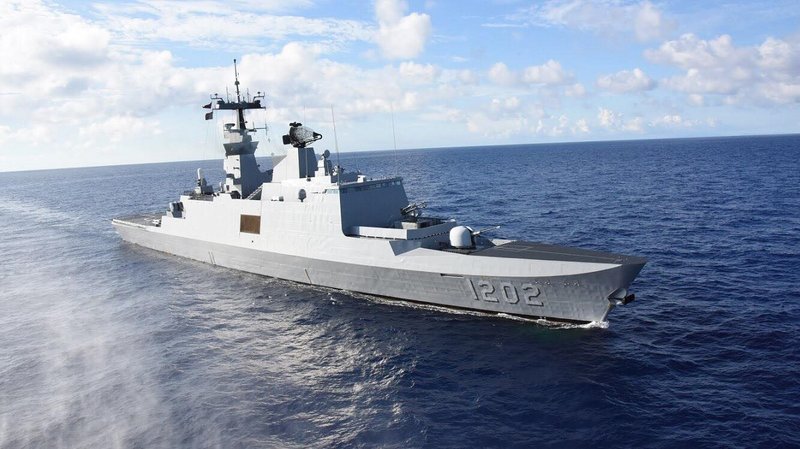
Above: Taiwan is prepared for a conventional naval confrontation with China but as the smaller force needs to consider all possible options. (Photo: ROCN)
Another tactic could be what Lavernhe and Corman refer to as ‘active deception’, misleading the adversary about one’s real intentions. Here, a combination of UAVs and USVs, rather than being used to saturate enemy defences as was the case in Sevastopol, could be used to create a diversion, with UAVs attracting attention while USVs deliver a blow elsewhere, or vice versa.
In practice, the possible scenarios with either the PLAN or the ROCN attempting to create an effect of surprise using uncrewed systems are varied and may include multiple tactics.
The reality in the Taiwan Strait, however, is that in contrast with the situation in the Black Sea both parties are generally well aware of the other’s capabilities.
More specifically, by virtue of being the smaller navy in the theatre, the ROCN must be ready to exploit every opportunity to use small units for surprise attacks. This would allow it to safeguard and protect larger assets capable of delivering a more significant blow should the need arise.
Is high-level artificial intelligence still too risky for naval combat systems?
Past months have seen an increase in the number of articles discussing artificial intelligence (AI), sharing concerns over its extensive use and inevitable pitfalls, including in the naval domain. But what does AI really entail, and should it be cause for significant, immediate concern?
Although not openly discussed, navies have been leveraging advances in AI for more than a decade. Typically, this can be found in combat management systems (CMS) – such as Lockheed Martin’s Aegis, Leonardo’s Athena and Naval Group’s SETIS – and certain types of radar, eg Thales’ AirMaster C.
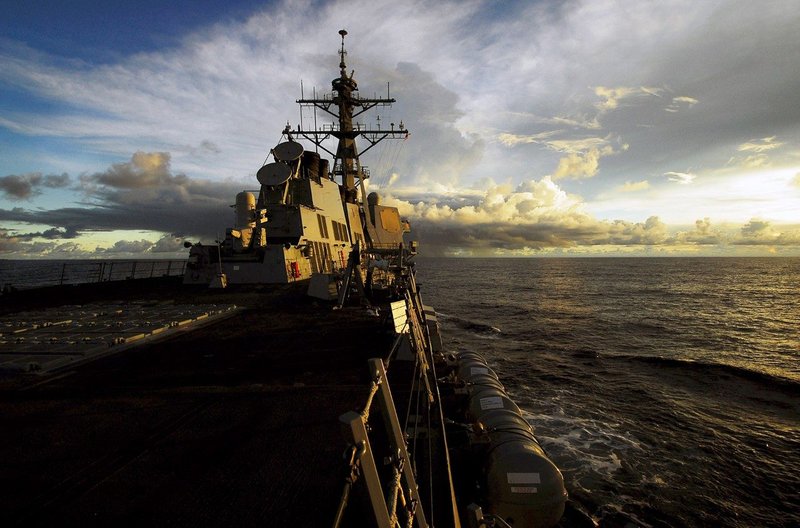
Above: Lockheed Martin’s Aegis combat management system uses simple AI to lighten the cognitive burden on human operators. (Photo: Lockheed Martin)
The type of AI used for these systems can be referred to as ‘simple’. As Sam J Tangredi and George Galdorisi explain in their book AI at War – How Big Data, Artificial Intelligence and Machine Learning are Changing Naval Warfare, published in 2021, simple AI is the ability of machines to perform calculations – through analogue or digital functions – faster than a human could.
In CMS and radar applications it is mainly used to lighten an operator’s cognitive burden.
More recently, industry has also started leveraging AI for pattern recognition and drone detection. Naval Group, for instance, has been testing a new algorithm to facilitate detection, identification and tracking of up to 100 UAVs.
The algorithm is not yet available, but in the next few years the company will seek to include it in systems such as the 360° surveillance system integrated in France’s FDI frigates.
Leonardo is also leveraging AI to enhance video situational awareness in submarines. The aim is to use algorithms to improve the quality of video streaming when the submarine is at periscope depth.
‘In practice, the periscope acquires an image, which is then transferred to the CMS where the algorithm will clean the image and facilitate recognition of potential threats and obstacles,’ Simeone Solazzi, programme portfolio manager at Leonardo, told the author.
In these instances, the type of AI leveraged can be categorised as ‘narrow’, that is, the system has an ability to learn and self-program within the framework of a pre-established range of specific activities such as maritime domain awareness. This type of AI already involves machine learning.
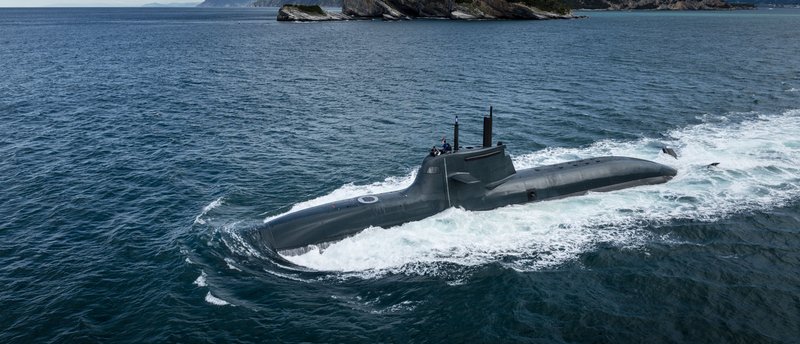
Above: Leonardo is enhancing video streaming feed from a submarine’s periscope using narrow AI with an element of machine learning. (Photo: Fincantieri)
The use of a third type of AI, referred to as ‘general AI’ by Tangredi and Galdorisi, is not yet on the defence industry’s horizon due to a number of limitations.
General AI characterises any system capable of mimicking human awareness. This implies the use of deep learning – combining multiple layers of complexity to create a new algorithm. The critical issue for general AI is that, while it may be able to mimic human awareness, it cannot exercise judgement concerning the data it receives.
As Tangredi and Galdorisi write, any conversation about the use of AI needs to start with a discussion of who owns the data, its quality, the minimum quantity needed for decision-making, where databases are and how they will be accessed.
Both Naval Group and Leonardo are working on tackling these issues related to data. The former has joined with other European partners in a consortium – confiance.ai – that aims to build trust between AI systems and defence forces.
In Italy, Leonardo focuses more specifically on data quality through its Security Operation Centre, which is concerned with anomaly detection in customer data to prevent cyber-attacks.
Ultimately, according to many analysts, AI in the military domain should be treated the same as any other emerging technology. A number of countries are already working towards such a doctrinal corpus, including France, the UK, Australia and the US, who have all published reports and strategies on the military applications of AI.
These recognise AI’s lack of flexibility and constitute, at least to date, a safeguard against a wider, ill-advised adoption of both narrow and general AI.
Sea mines – how a resurgent global problem is fuelling interest in countermeasures
Naval mine-hunting was thought to be a thing of the past at the beginning of this century. Yet over the past few years the naval sector has seen a resurgence of mine countermeasure (MCM) programmes across the globe. The war in Ukraine and tensions rising in Asia-Pacific are doing little to quell concerns.
On 8 September 2022, a Romanian Navy Musca-class minesweeper hit a drifting mine northeast of the port of Constanța in the Black Sea. At the time, less than a year into the war in Ukraine, this was already the ninth reported incident of mine detection in the area.
Since then, the mine threat in the region has consistently featured in news reports, be it off Turkey’s coast, in Bulgarian and Romanian waters or, unsurprisingly, off Ukraine’s itself.
In response to increasing regional threats, the Romanian MoD has increased its budget to 2.5% of GDP – 0.5% above the minimum required by NATO and a nominal 14% increase on 2021.
Much of this increase will support three key armament projects, including new MCM vessels – Romania already has four.
Over in Ukraine, where many of the Black Sea’s mines were originally deployed to protect the coast from the Russian Navy, the UK Royal Navy (RN) is providing MCM support through technology and training.
In August last year, the RN donated six lightweight autonomous vehicles designed to operate at depths of up to 100m – ie in coastal waters. Additionally, RN personnel, alongside sailors from the US 6th fleet, are training Ukrainian Navy crews to use the systems.
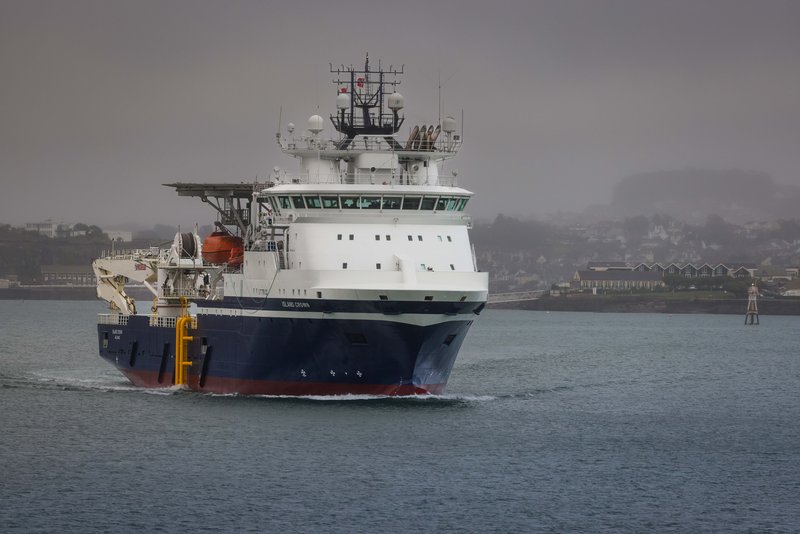
Above: The Royal Navy has acquired a former offshore support vessel to serve as a mothership for uncrewed MCM systems. (Photo: UK MoD/Crown Copyright)
While much attention is being placed in the media on Ukraine, the mine threat is clearly being felt all around the world. A Royal Australian Navy (RAN) report released in 2020 anticipated that mines would come back in the region as a key anti-access/area denial (A2/AD) capability.
In fact, local sources noted that this approach could be part of China/Taiwan A2/AD strategies in the Taiwan Strait.
As a result, a number of MCM are emerging in the region as well. Notably, in September 2022, Korean defence SME SonarTech and Thales signed an MoU for the joint research and development of a mine warfare sonar system.
The RAN, on the other hand, is looking to acquire sea mines itself under its SEA2000 capability programme – between $500 million and $1 billion Australian dollars have been budgeted.
Back in Europe, France, the UK, Belgium and the Netherlands are all involved in joint MCM capability programmes. In October 2022, France tested its uncrewed MCM system developed in cooperation with the UK – known as SLAM-F in France and MMCM in the UK.
At the same time, it announced that it would also cooperate with the Belgian and Dutch navies to capitalise on their work on the mothership for their joint rMCM programme.
As part of its Mine Hunting Capability (MHC) programme, the UK RN received in January 2023 the MV Island Crown, an offshore support vessel it purchased from Island Offshore. The ship will be operated by the Royal Fleet Auxiliary as an MCM mothership.
Finally, over in North America, on 4 April Textron was awarded an initial $20.8 million contract for design, development and integration of the Magnetic and Acoustic Generation Next Unmanned Superconducting Sweep (MAGNUSS).
In February 2023 the Canadian Department of National Defence (DND) meanwhile awarded Kraken Robotic Systems two contracts for the Remote Minehunting and Disposal Systems (RMDS).
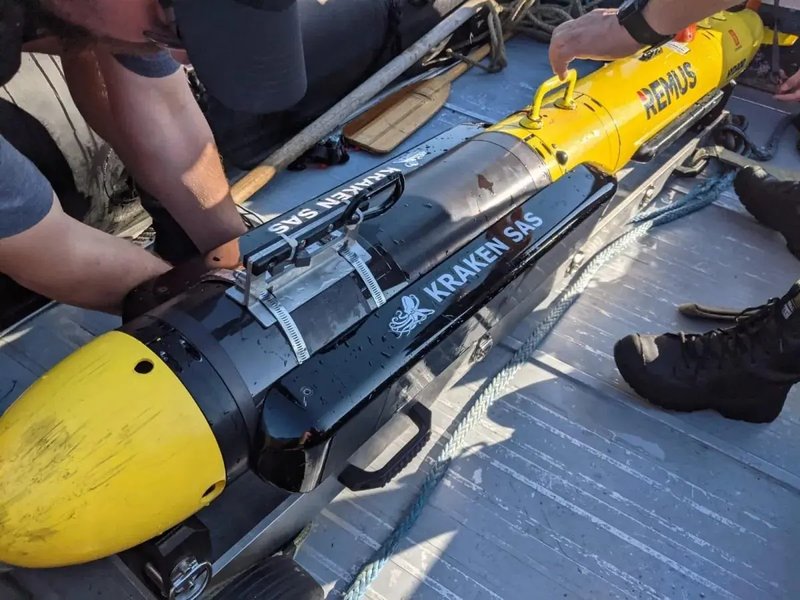
Above: Kraken Robotic Systems has been selected to provide remote MCM systems for the Royal Canadian Navy. (Photo: Kraken)
As noted by RAND expert Scott Savitz in an opinion piece published in the organisation’s blog in November 2022, sea mines, and more specifically drifting sea mines, are gaining increasing importance in naval warfare.
They are particularly difficult to defuse or neutralise, but uncrewed systems could provide a safer way for navies to address the threat. As autonomous systems continue to feature prominently in MCM programmes around the world, it is clear that the message has reached those navies with the budget to acquire them.
Growing threat, shrinking ambitions – Taiwan’s naval vessel programmes under the microscope
Analysis by Giovanni Rasio

In 2016 Taiwan unveiled a $15 billion naval modernisation plan which encompassed 12 new shipbuilding projects. Among the programmes announced, Taipei intended to procure indigenously built destroyers and frigates.
However, as testified by the 2023 defence budget, substantial changes to the naval procurement ambitions of the country have been made.
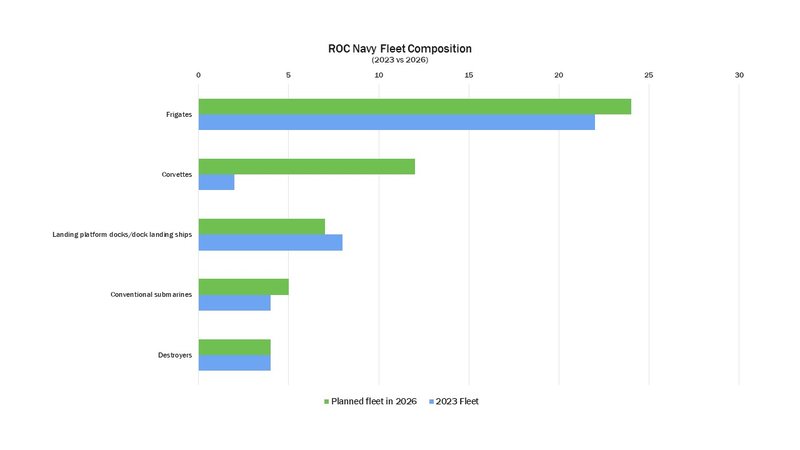
Chart 1: By 2026, the Republic of China Navy plans to take delivery of ten new corvettes, two New Generation Light Frigates and the first indigenous submarine. (Source: Shephard Defence Insight)
The bulk of the Republic of China Navy (ROCN) fleet comprises former USN vessels, with four Kidd-class guided missile destroyers, two Oliver Hazard Perry-class frigates, six Knox-class frigates, two Newport-class LSTs, four LST-524s, an Anchorage-class LSD, and two Tench-class submarines.
In addition, the Navy operates eight licence-built ships based on the Oliver Hazard Perry class, six La Fayette-class frigates, the new Yu Shan LPD, and two Hai Lung-class submarines.
As part of the 2016 modernisation plan, four new 10,000t destroyers and 15 4,500t New Generation Guided Missile Frigates were planned to be purchased as a replacement for the ex-US vessels currently in service.
However, in its 2023 defence budget, Taipei redefined its priorities and decided to scrap the plan for the 4,500t frigates in favour of smaller New Generation Light Frigates.
Two ships, expected to displace between 1,500t and 2,500t, will be built by 2026 under a procurement programme worth almost $900 million. A further six platforms in dedicated AAW and ASW variants could be procured later.
The defence budget does not mention the four new destroyers, meaning that the programme has likely been paused or cancelled.
In the meantime, Taiwan is proceeding with the procurement of Tuo Chiang-class corvettes, with the fourth ship launched in February this year. The ROCN plans to take delivery of the 12th vessel by 2026.
Progress is also being made on the procurement of submarines, with the launch of the first of class expected for September 2023. The submarine is scheduled for delivery by 2025/2026, and a further seven boats are planned to be purchased following tests and evaluations on the lead SSK.
Don't want to miss out on future Decisive Edge content? Make sure you are signed up to our email newsletters.












